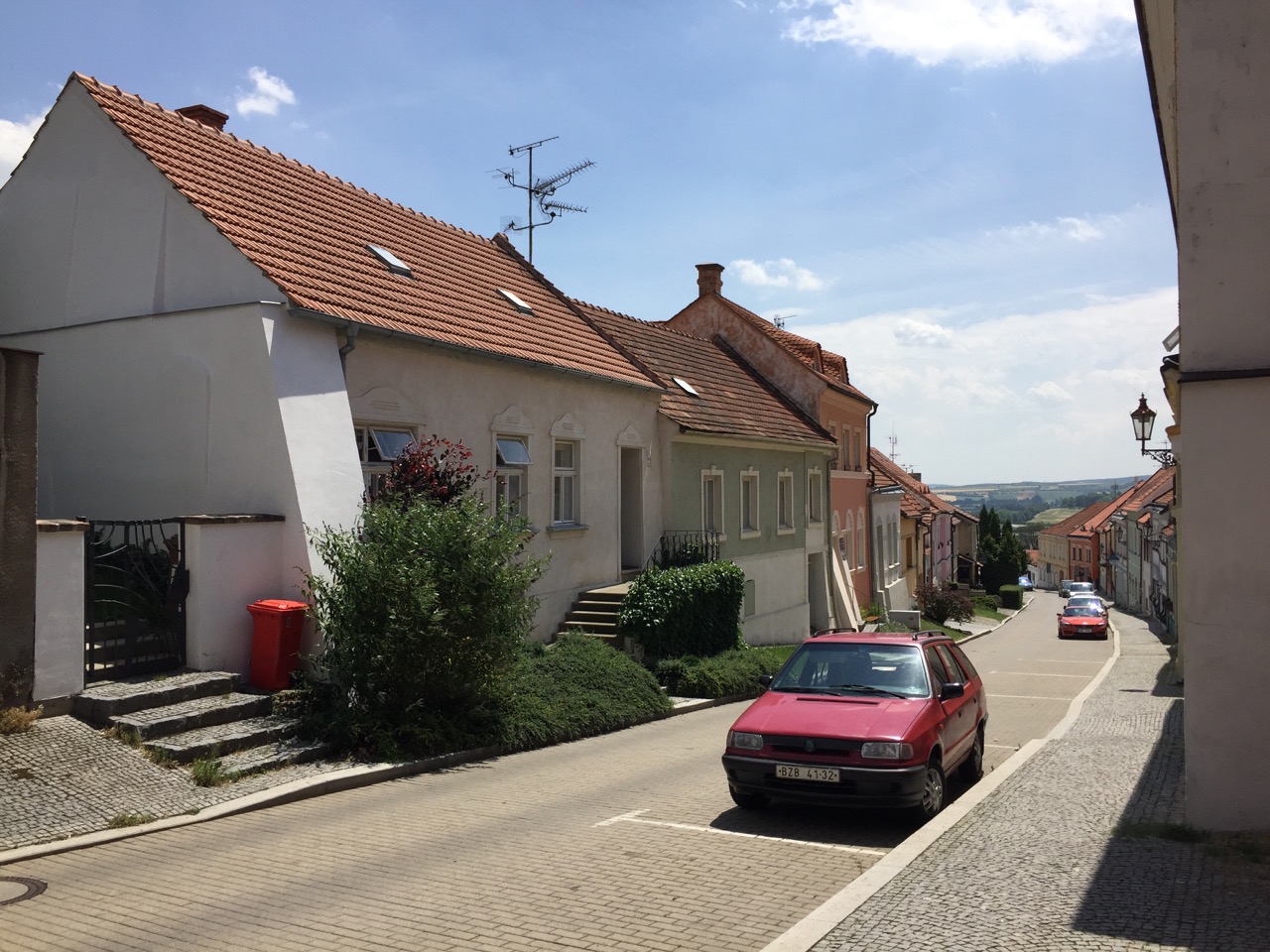The Nikolsburger Rebbe
A perk of joining kosher tours around the world is that you get to learn about Jewish personalities that you had little to no knowledge of. In Europe, there are many Jewish figures in history that have helped shaped their communities and culture into what it is today. Take for instance the Horowitz brothers in the Czech Republic, particularly Shmuel Shmelke of Nikolsburg (Mikulov).
 Rabbi Pinchas HaLevi Horowitz was a follower of the Maggid of Mezritch along with his older brother, Rabbi Shmuel "Shmelke" of Nikolsburg. He attained scholarly repute as the author of Hafla'ah (on Talmud and halacha), HaMikneh (same) and Panim Yafos (on Scripture). He became the chief Rabbi of Frankfurt. Like many rabbinical authors, he is commonly referred to by the title of his most famous work, in this case as the Ba'al Hafla'ah. His most illustrious student was R. Moshe Schreiber, the famed Chattam Sofer.
Rabbi Pinchas HaLevi Horowitz was a follower of the Maggid of Mezritch along with his older brother, Rabbi Shmuel "Shmelke" of Nikolsburg. He attained scholarly repute as the author of Hafla'ah (on Talmud and halacha), HaMikneh (same) and Panim Yafos (on Scripture). He became the chief Rabbi of Frankfurt. Like many rabbinical authors, he is commonly referred to by the title of his most famous work, in this case as the Ba'al Hafla'ah. His most illustrious student was R. Moshe Schreiber, the famed Chattam Sofer.Rabbi Shmuel Shmelke HaLevi Horowitz of was a major disciple of the Maggid of Mezritch along with his younger brother, Rabbi Pinchas, who became the Rabbi of Frankfurt. Many of the leading rebbes in Poland and Galitzia were originally his disciples. Among the books he authored are Divrei Shmuel and Nazir HaShem.
A contemporary of Landau and Eibenschütz , he is a rabbi who was never as renowned as they were. But he is remembered in Jewish legends and his grave is also a pilgrim site.
Rabbi Smuel Smelke ben Tzvi Hirsch Ha-Levi Horowitz, officially known as Samuel Herschel Lewi, was born into a Jewish family originally from Prague, in Czortków, Poland. His father was one of the most serious students of the founder of the East European Hassidim, rabbi Yisroel Ba’al Shem Tov, known as the BeShT.
Smelke and his brother Pinchas ben Tzvi Hirsch Horowitz were among the first of the rabbi intelligencia to join the Hassidic movement in the 18th and early 19th centuries. The Hassids were known for forming spoken legends and parables which traditionally included people from their own movement. Some legends even include members of the Horowitz family and the brothers, rabbis Pinchas and Shmelke (who were known as story tellers). When Pinchas became the head rabbi in Frankfurt am Main in Germany – and Shmelke accepted the post of rabbi in Mikulov – it was the first time that Hassidic rabbis were in such high positions to the West from Galicia, which traditionally had the strongest Hassidic presence before the Holcoaust.
Shmelke was the first and last Hassidic rabbi to ever hold this post in Bohemia and Mikulov was the only town in the entire country were Hassidism had a strong hold for a time. It was sometimes called “the westernmost shtetl“. Mikulov’s Jewish community was founded in the first half of the 15th century.
Mikulov spent two centuries (from the mid-17th century until 1851) as the political, cultural, and spiritual center of the Moravian Jews and the seat of the Moravian Chief Rabbi. It soon became the largest Moravian community. In the 18th century, 620 “familiants” – Jews with the legal right to found a family – were permitted to live here. In the first half of the 19th century, Mikulov’s 3,500 Jews accounted for 42 percent of the town’s population.

This was the second largest Jewish community in the Czech lands after Prague. After receiving full civil rights in 1848, Jews began to migrate to larger cities like Brno and Vienna to find a better life, causing a gradual decline of Mikulov’s Jewish Quarter.
Shmelke came to Mikulov in 1772 and stayed until his death. His appointment as the Moravian Chief Rabbi caused a considerable resistance from members of the Jewish community for his belonging to the Hassidic movement. Many of them tried actively to prevent this situation. They argued that he did not have proper knowledge of the official language--which was German--and the Moravian minhagim. The whole dispute was resolved only by the Austrian Empress Maria Theresa, who confirmed Shmelke in his office because of his devotional life style and his deep knowledge of orthodox Jewry. She even granted him a number of privileges.
Rabi Šhmelke is considered to be the pioneer of Hassidism. In Mikulov, he founded a great Yeshiva, where, among other gdolim, Rabbi Yaakov Yitzhak Horowitz, Rabbi Menachem Mendel of Rimanov, Rabbi Israel of Koznic, Rabbi Moshe Leib of Sasov and the legendary rabbi Mordechai Benet all studied.

Shmelke’s teachings and writings show a protest against the superficial and light-hearted way of life of most of the then-living Chassids. During the dispute over chasidism at that time, Rabbi Šmelke begged the rabbi from Brody to stand up against the wrath that Gaon of Vilna had spoke against Hassidism. He denied that the supporters of Hasidism disrespected the Jewish tradition.
Rabbi Šmu'el Šmelke ben Hirsch ha-Levi Horovic died after five decades in Mikulov on the night of April 27th-28th 1778. He is buried on a rabbinic hill in the Jewish cemetery, and his tombstone is engraved with a symbol of his family – the Levites.
His only descendant was rabbi Tzvi Yehoshua Levi Horowitz (1754-1816), called Ribas or Joseph Shaif, who was gradually the chief rabbi in Jemnice, Třebíč and Prostějov, where he was buried at the old Jewish cemetery.
Advertise on APSense
This advertising space is available.
Post Your Ad Here
Post Your Ad Here
Comments